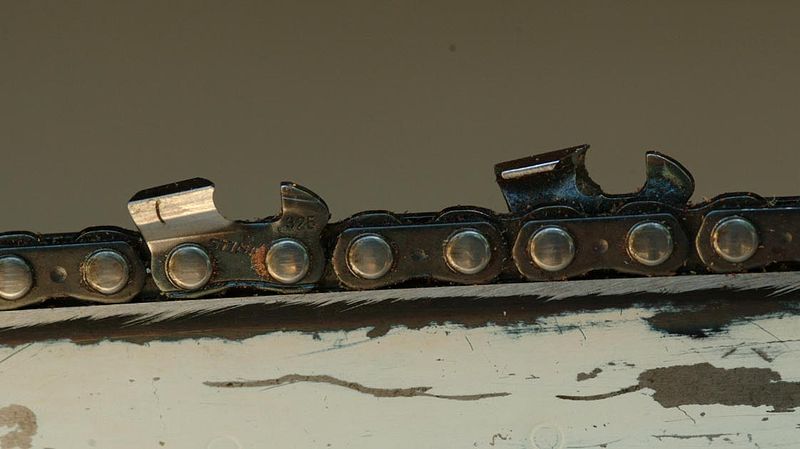The only way to ensure the work you do to sharpen your saw is right and will last more than 1 minute of cutting is to use the right tools.
There is nothing like cutting with a sharp chainsaw. The chain slicing through the wood with ease. Chips flying and the sticks of firewood piling up. Cuts that are straight and true. Not only is a sharp chainsaw a joy to use, it is safer too. You are working with your chainsaw and not against it.
I wish I could say I get this kind of result every time I sharpen my saw. Unfortunately for me, that is not the case. Over the years, my technique has improved and I can now say that nearly all of the sharpening I do results in the high standard I described above. To get to the point I am at now, I needed to master the 3 keys to sharpening a saw. Namely, use the right tools, use the right techniques, and follow the right schedule. In this article I will discuss the right tools and a future article will cover the right techniques and schedule.
There are a number of different tools you can use to keep your chain sharp – some very simple and some very complex, including some specially designed power tools. My preference is to use a hand file, mostly because I am too cheap to invest in something that will probably make my life easier. Whether you are sharpening by hand or using a power tool of some kind, having the right size file for your chain is critical. If you are not sure what file size you need, then check with the chain manufacturer (or a shop that sells your brand of saw) to find out what is correct for you.
A depth gauge for the rakers (also called drags and located in front of each cutter) is also important to have if you want the cutting surfaces to be most effective. This is nothing more than a simple gauge that measures the height of the raker compared to its associated cutter. A flat file is the recommended tool for bringing down the rakers.
Finally, you need a guide to set the correct angle for the top plate (or top cutting surface). Some manufacturers make a device that files the cutter head and the raker at the same time. I have one of these and it works pretty well, but not as good as filing the cutters and rakers separately.
It seems like everybody and their brother has come up with a different kind of tool that will make sharpening a chainsaw easier. Some of these attach to the bar and the exact angles can be locked in, making it difficult to mess up the filing. Others require you to remove the chain from the bar and attach it to a bench grinder for sharpening.
All of these tools can work well, but the one that received the highest reviews is a rotary tool with an attachment specifically for sharpening chains. A number of companies make these attachments and they are relatively inexpensive. Additionally, you don’t have to buy another specialized power tool that has only one use – instead you can use one of the tools you already have. And if you don’t have a rotary tool, here is your excuse to go out and buy the one you always wanted.
Don’t feel like you have to go out and buy an expensive sharpening tool to make sure your chain is sharpened correctly. With some practice, you can do as good and often even a better job using the simplest tools. However, if you find that you can’t seem to get the chain very sharp or it doesn’t stay sharp long, then it might be time to investigate something more complicated or talk with the guys at your local chainsaw shop.
